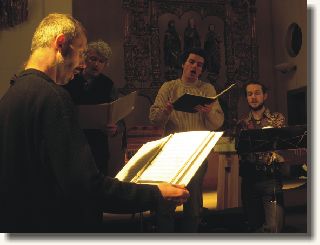
In Baroque music, ritornello was the word for a recurring passage for orchestra in the first or final movement of a solo concerto or aria (also in works for chorus). In ritornello form, the tutti opens with a theme called the ritornello (refrain). This theme, always played by the tutti, returns in different keys throughout the movement. However, it usually returns in incomplete fragments. It was favoured by composers such as Bach, Vivaldi and Handel and was used frequently in concertos, chamber works and vocal and choral pieces, though most prominently in the solo concerto where it created a 'tutti-solo-tutti-solo-tutti' pattern, with the ritornello being the 'tutti' section. When the classical music era started, the ritornello form was altered to resemble sonata form, though it later transformed to become rondo form.
The final section of the fourteenth century madrigal was also called the ritornello and the ritornello technique was employed by Giovanni Gabrieli in his 16th century motets. The Ritornello form can be found in many Baroque and Classical period music such as J.S. Bach's Brandenburg Concerto No. 3. Other pieces in ritornello form include a sonata in F Major by Joseph Haydn (using the form at a late date, as a classical period composer).
Beginning with the late Classical and extending through the duration of the Romantic era, the use of the ritornello construction faded with the advent of the far more standard classical concerto; however, with the advent of the 20th century and the general feeling of malaise within the composition field regarding the limits of form, the ritornello experienced an uptake in interest.
1 comment:
酒店經紀菲梵,酒店經紀~free fun~,酒店經紀,酒店經紀,酒店上班,酒店上班,酒店小姐,酒店小姐,酒店工作,酒店工作,酒店打工,酒店打工,酒店兼差,酒店兼差,酒店兼職,酒店兼職,經紀人,經紀人,禮服店,禮服店,便服店,便服店,
Post a Comment